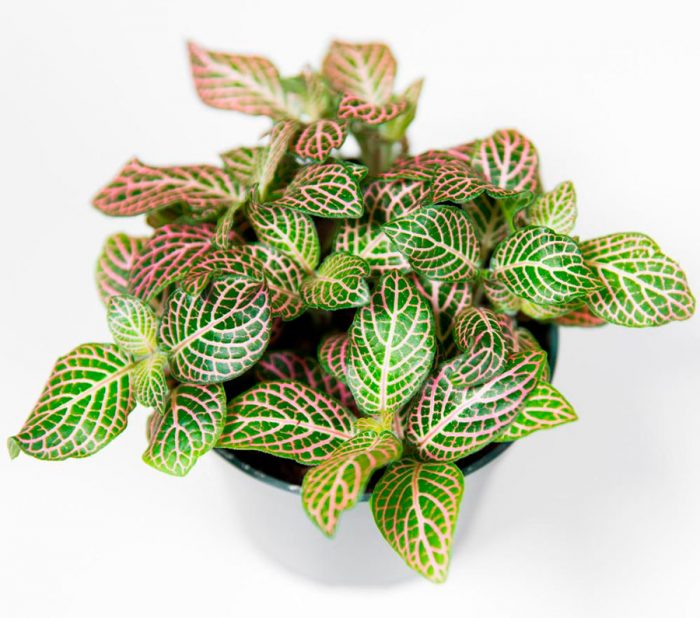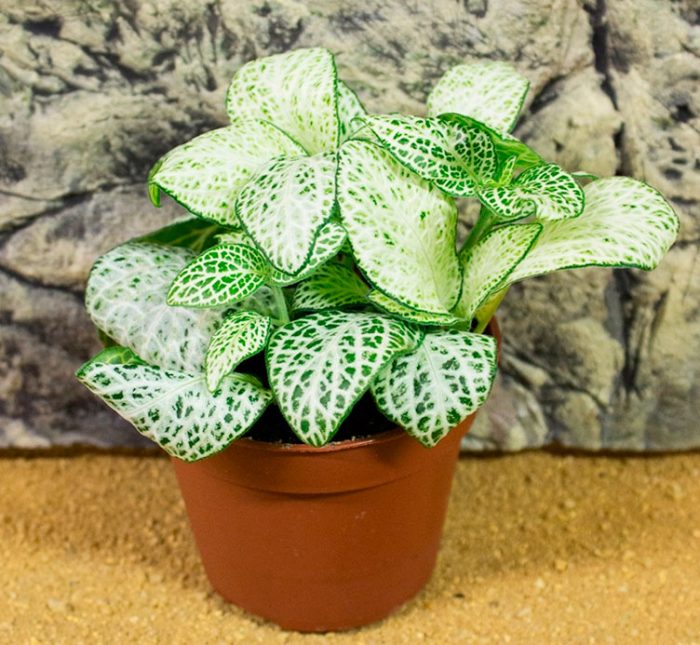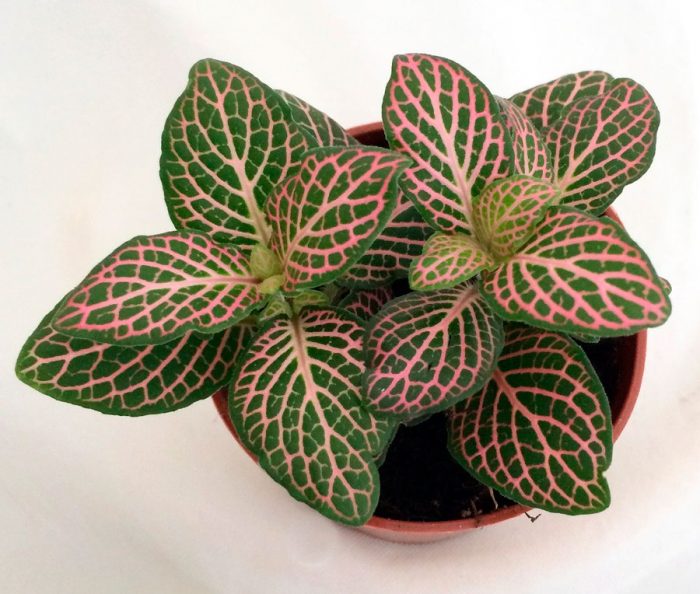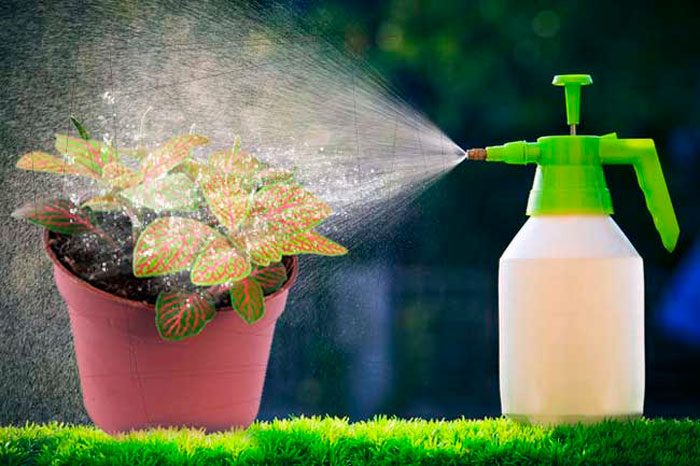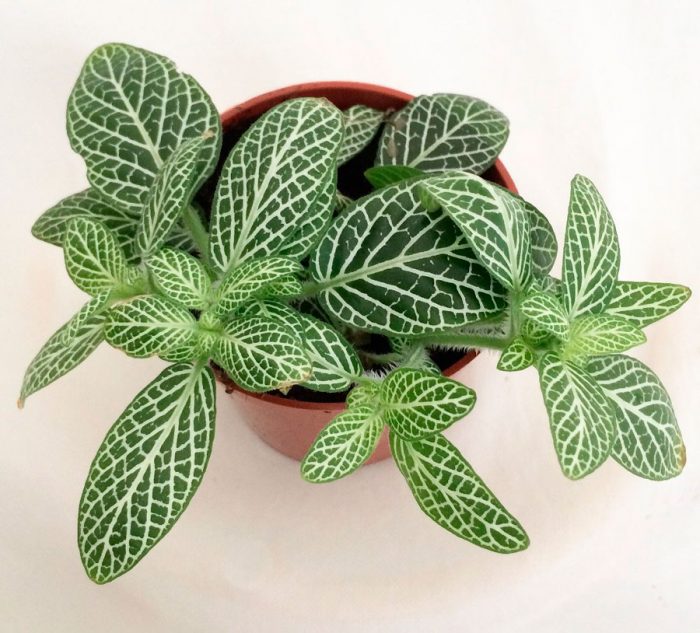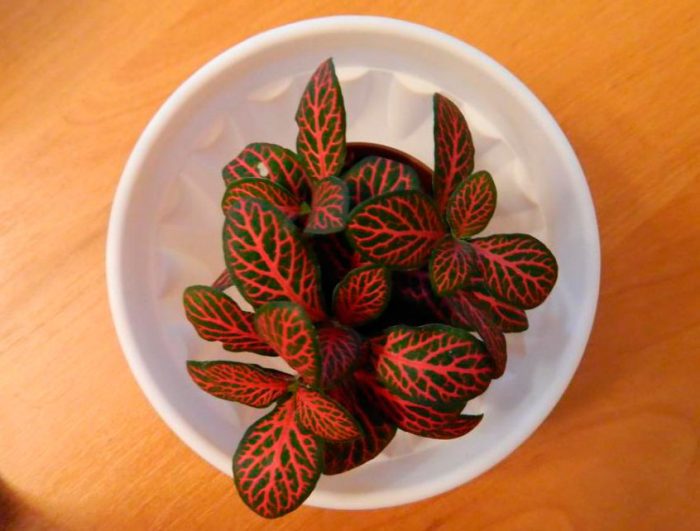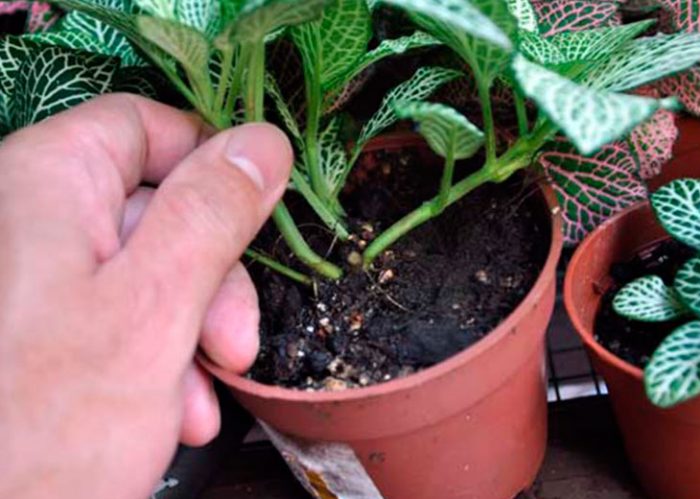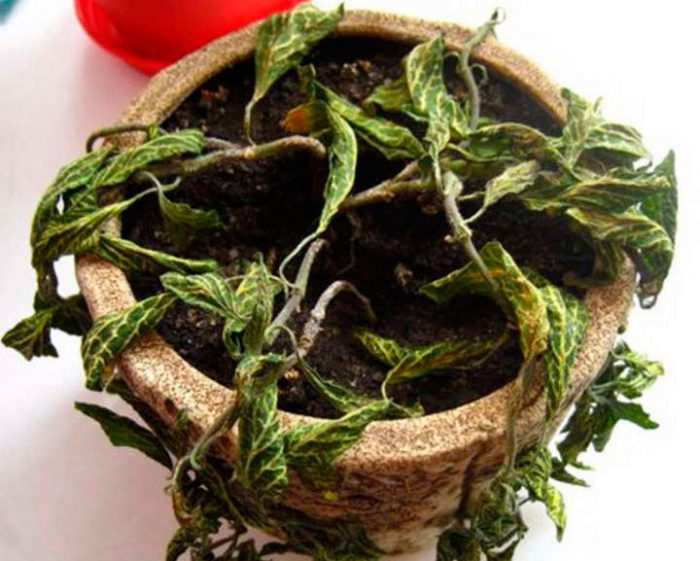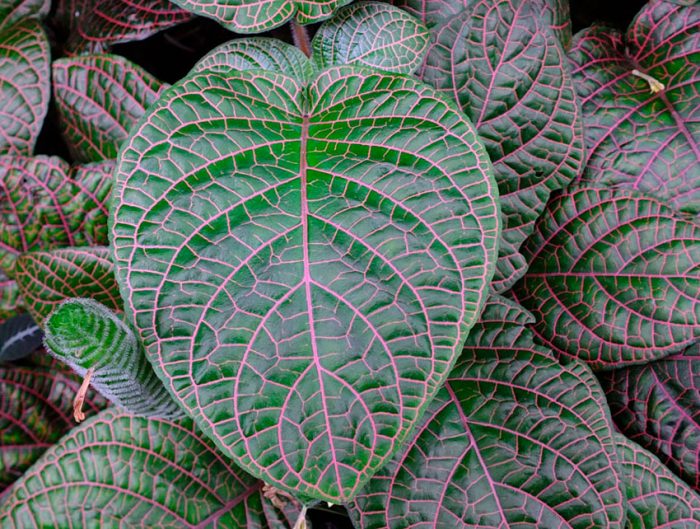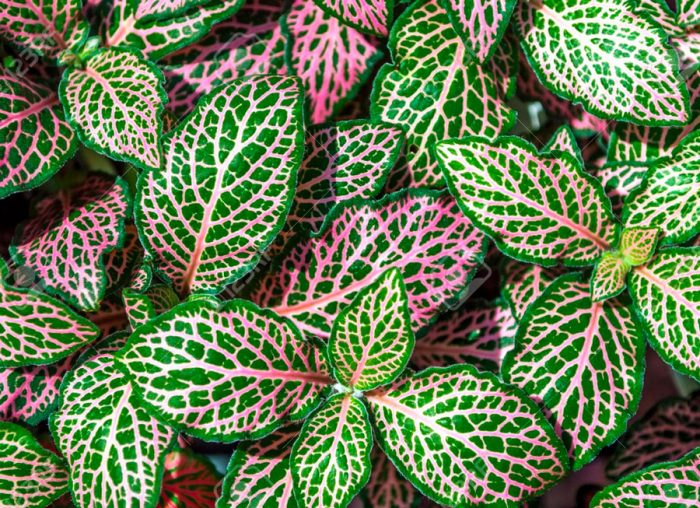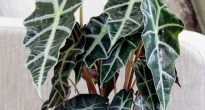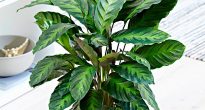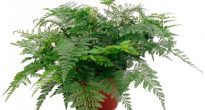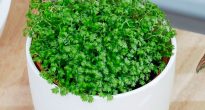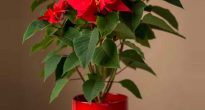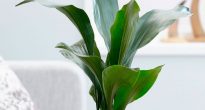The herbaceous perennial plant Fittonia is native to South America (most species from Peru). This genus is considered a representative of the Acanthus family and includes about 10 species.
The bushes of such a flower are not very high. There is pubescence on the surface of the creeping stems. Single flowers have a yellow color (closer to a sulfur shade). In the axils of the bracts, the flowers are collected in spike-shaped inflorescences. The shape of the bracts is round-ovate, and their length and width are approximately equal to 10 mm. The length of elliptical leaf plates, depending on the species, can vary from 2 to 16 centimeters; they have a green color with a purple tint and clearly distinguished veins. If the plant is properly cared for, it will grow and develop normally. It should be borne in mind that he needs a stable temperature, as well as high humidity. In a room with excessively dry air and with sudden changes in temperature, the flower may die.
Content
Brief description of cultivation
- Bloom... Fittonia is cultivated as a decorative leafy plant.
- Illumination... Needs a lot of bright light, but it must be diffused.
- Temperature regime... In summer it is about 24 degrees, and in winter - about 20 degrees.
- Watering... Such a flower is watered systematically and in moderation. In spring and summer, this is done immediately after the top layer of the potting substrate dries out. In the cold season, it is recommended to do this after the soil mixture dries out to ¼ of the depth.
- Air humidity... Should be elevated. The bush must be systematically moistened with a sprayer in the morning and evening. In order to keep the air humidity high, wet pebbles can be poured into the pan, and an open vessel filled with water can also be placed next to the flower.
- Fertilizer... In the spring-autumn period, top dressing is carried out 1 time in 15 days, for this, mineral fertilizers are used for decorative deciduous plants, while the dosage should be reduced by half of that recommended by the manufacturer. In winter, the number of dressings is reduced to one in 30 days.
- Pruning... During the growing season, pinching of the tops of the stems is carried out. And in the last days of March, pruning of bare stems is carried out, and they do this in several stages.
- Dormant period... It is not pronounced.
- Transfer... The bushes are transplanted regularly once a year in the spring (March – April) immediately after they are pruned.
- Soil mixture... Sand, peat, coniferous and turfy soil (1: 1: 2: 2).
- Reproduction... Dividing the bush, layering and cuttings.
- Harmful insects... Thrips, scale insects, mealybugs and spider mites.
- Diseases... The culture loses its decorative appearance due to improper care or because the plant is already old.
Fittonia care at home
Illumination
When grown indoors, fittonia must be provided with a large amount of bright light. However, a south-facing window sill is not suitable for her. If you are forced to put a flower on a southern windowsill, then place it a little deeper into the room to protect the foliage from direct sunlight. The culture grows well on an east or west orientation window. The bush can also be placed on the north window, but with too little lighting, the foliage loses its decorative effect. In the cold season, when the daylight hours are very short, it is recommended to supplement the flower, for this they use fluorescent lamps.
Temperature regime
In the summer, the bush must provide an air temperature of about 24 degrees, and in the winter months - about 20 degrees. Remember that if the room is cooler in winter, then disease can strike Fittonia. Protect it from drafts and sudden changes in air temperatures, as this can cause all the foliage to fly around. In the warm season, it should never be carried to the balcony or garden.
Watering
When growing fittonia, it should be remembered that the clod of earth in the container should in no case dry out, as it sheds foliage because of this. And also make sure that no liquid stagnates in the substrate, as this leads to the appearance of rot on the root system. As a rule, watering is carried out immediately after the top layer of the substrate dries. And in winter, the soil mixture must be moistened a couple of days after its top layer has dried. You can water the bush only with well-settled slightly warm water.
Spraying
Indoor fittonia must be systematically moistened from a sprayer, because due to excessively low air humidity, it can get sick or pests will settle on it. It is necessary to moisten the bush at least 1 time a day, and it is better to do it twice: in the evening and in the morning. In order to increase the humidity of the air, you can put an open vessel with water next to the flower, or pour moistened pebbles into the pan, and put a flower pot on it. However, make sure that the bottom of the container does not come into contact with the liquid. It should also be noted that polishing the foliage can cause significant harm to the plant.
Fertilizer
Home-grown crops need to be fed all year round. However, remember that if the substrate contains too many nutrients, this will negatively affect the condition of the bush. In this regard, for feeding, you should take ½ part of the dosage recommended on the manufacturer's packaging. For this, complex mineral fertilizers are used. In winter, feeding is carried out 1 time in 30 days, and in the spring-autumn period - 1 time in 15 days.
Pruning
In order to improve the branching of the plant, it is necessary to regularly pinch the tops of the stems. As the plant grows, its lower part is exposed, which is why its decorative effect suffers. To rejuvenate the bush, it is pruned in the last days of March. However, it is impossible to cut off all the foliage at one time, since in this case the development of young shoots may become slower. In this regard, the bush is cut in several stages.
Fittonia transplant
The transplant is carried out systematically once a year in March or April. The transplanted bush can be rejuvenated at the same time, since over the years it can lose its decorative effect.For planting, choose a wide and low container. At its bottom, a good drainage layer is made from small pieces of brick or expanded clay. From above it is covered with soil mixture, for the preparation of which it is necessary to combine peat, sand, sod and coniferous soil in a ratio of 1: 1: 2: 2.
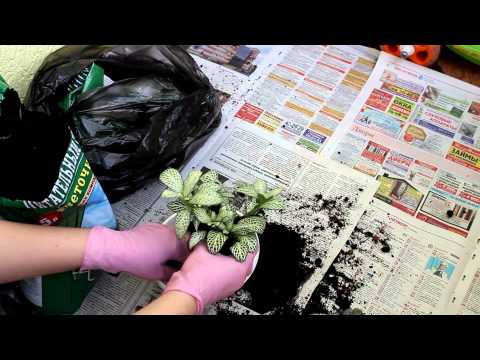

Watch this video on YouTube
Reproduction methods
Cuttings
If desired, fittonia can be propagated every year during transplantation, while this process is combined with rejuvenation. To do this, cuttings with 3-5 leaf plates are harvested, they are cut from the top of the bush. In order for rooting to take place as quickly as possible, the length of the cutting should be no more than 80 mm. Further, the segments are planted for rooting in the sand, while the cut end must be inserted into it. They are covered with a jar on top, their roots will grow back after about 30 days. Moisten, water, and ventilate the cuttings systematically.
For rooting, they can be placed in a container with water, while the liquid should be poured no more than 10 mm, and the jar itself should be wrapped with foil. Twice or three times in 7 days, the package must be removed for a while and the foliage must be moistened from the sprayer. For good rooting, keep the temperature high (at least 26 degrees). After powerful roots are formed, the plant is planted in a substrate, the composition of which is described above.
Dividing the bush
If desired, when transplanting, the bush can be divided into several parts, which are planted in individual pots. But remember that it is necessary to divide the bush very carefully, trying not to injure the root system. If you want your bush to be very lush, then plant several Fittonias in one container.
Reproduction by layering
When grown at home, the culture is capable of self-propagation by layering. But if you don't want to wait for this to happen, then help the plant. To do this, a part of the shoot, on which there are no leaves, is bent to the surface of the substrate and dug in. After a while, roots will form in this place, then the cuttings are cut from the parent plant and transplanted into a separate container.
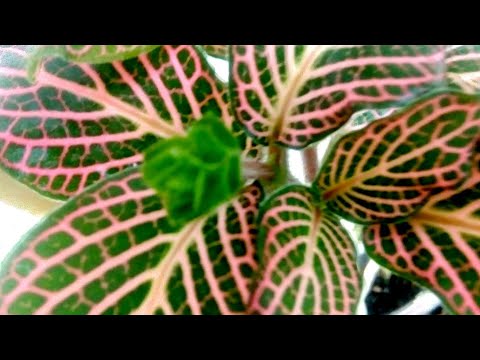

Watch this video on YouTube
Possible problems
Fittonia died suddenly... This can happen when Fittonia is over-watered, especially in winter. Be sure to water it properly. It can also happen due to sudden temperature fluctuations or exposure to excessively cold air.
The bottom leaves of fittonia fall... This is a completely natural process, since in a culture, as it grows, the stem is exposed. Rejuvenate the bush, for this, remove the shoots that have begun to bare.
Yellow foliage... The leaf plates begin to turn yellow due to the fact that there is a regular stagnation of liquid in the substrate. In this case, the abundance of watering must be reduced and carried out only when the top layer of the substrate dries out.
The tips of the foliage turned brown... On leaf blades, the tips sometimes turn brown or yellowish brown. This can be due to both an excessive amount of nutrients in the substrate, and their lack.
Fittonia leaves shriveled.Culture needs high humidity. If the foliage becomes shriveled, then the air is very dry. Leaves can also wrinkle due to excessive bright light or as a result of direct sunlight hitting them.
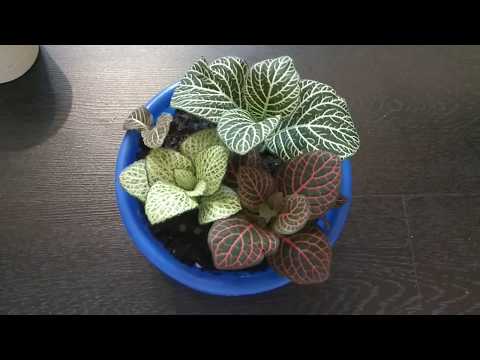

Watch this video on YouTube
Pests
Most often they settle on the bush scabbards, mealybugs, thrips and spider mites.
Main types
Large Fittonia (Fittonia gigantea)
This flower is native to Peru, where it grows in rainforests. In height, the bush can reach a little more than 50 centimeters. There is pubescence on the surface of the violet-red stems.The length of elliptical leaf plates, depending on age, is 10–16 centimeters, and the width is 4–10 centimeters. Shiny green leaf plates have red streaks.
Fittonia verschaffeltii
Such a not very tall plant in nature can be found exclusively in the tropical forests of Peru and Colombia. The pubescent stems practically spread over the soil surface, in this regard, they reproduce quite easily by layering. Dark green elliptical or ovoid leaf plates have red veins. They are 5–10 centimeters long and 4–6 centimeters wide.


Watch this video on YouTube


